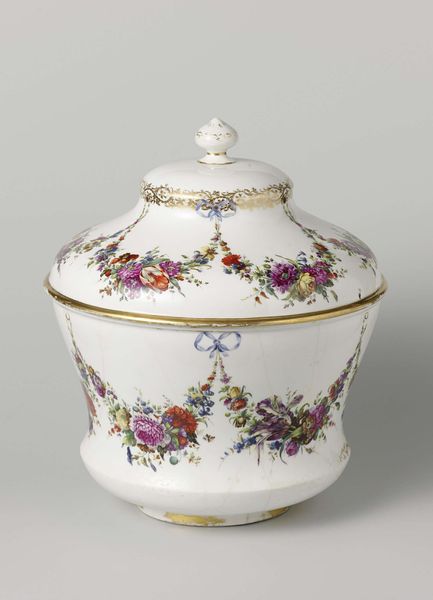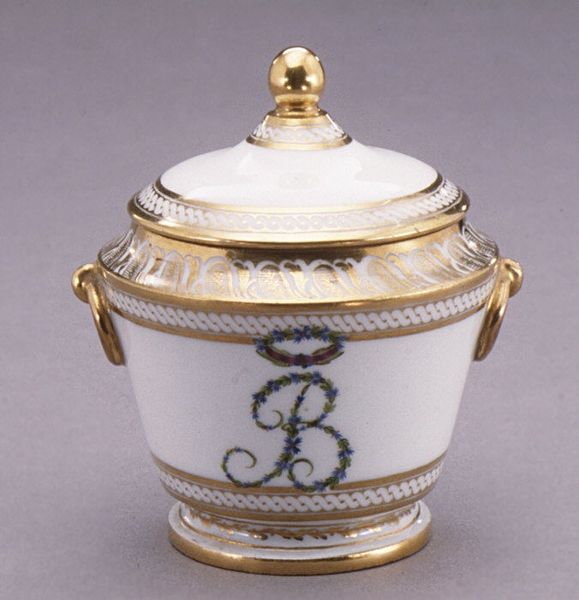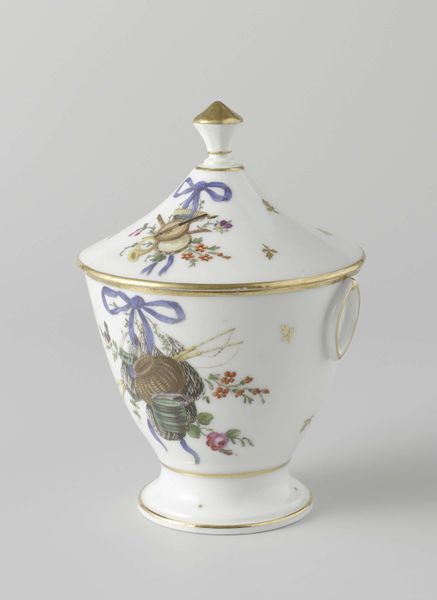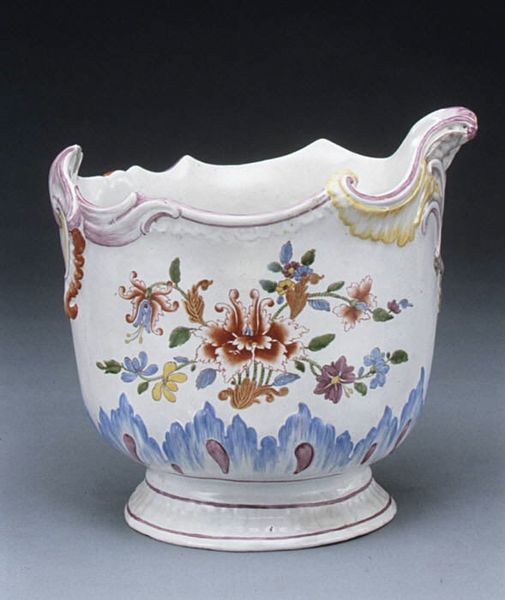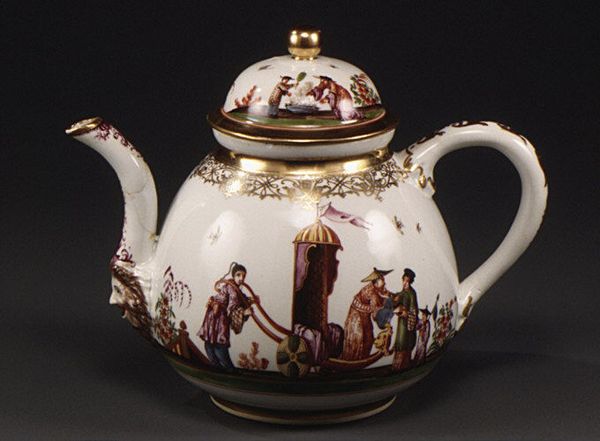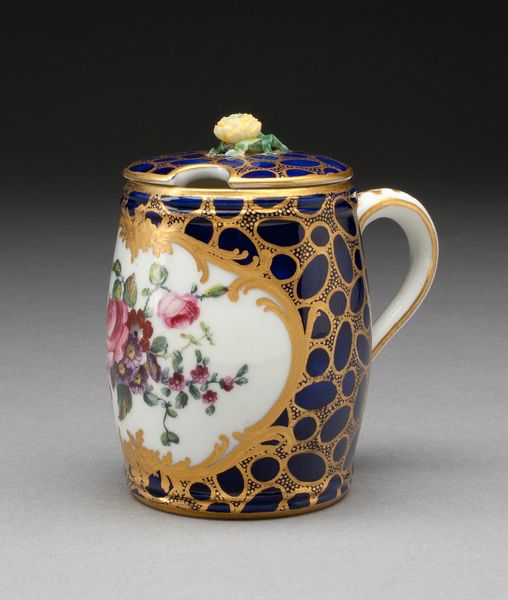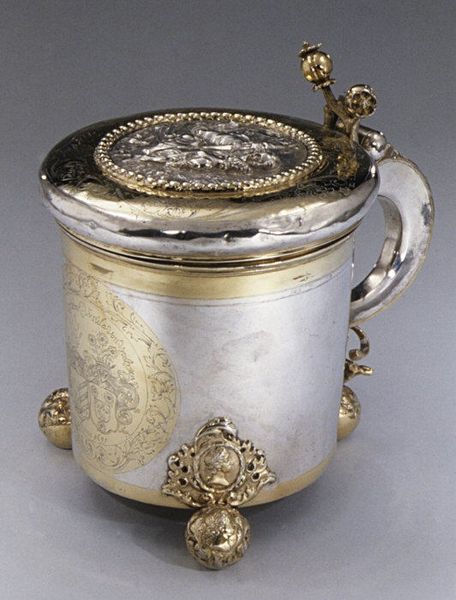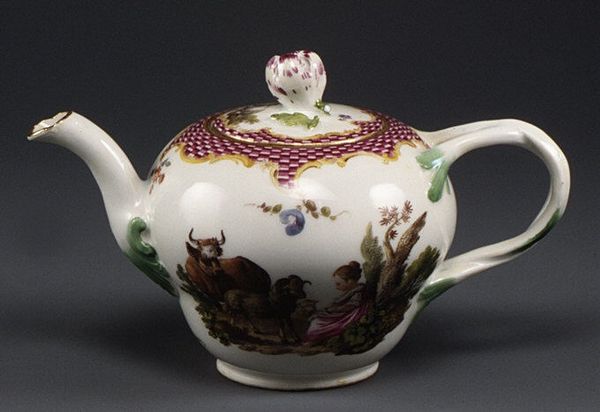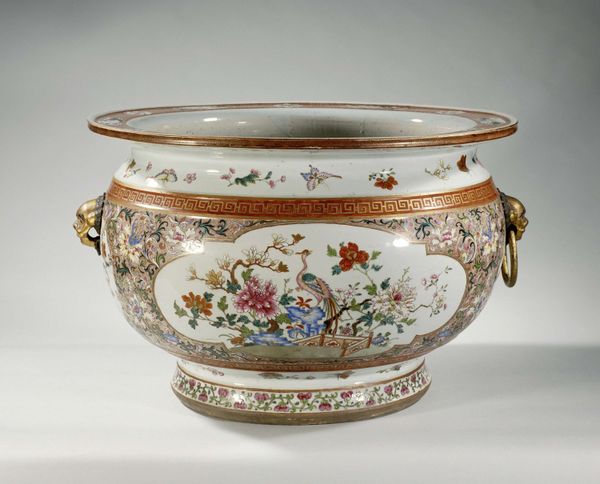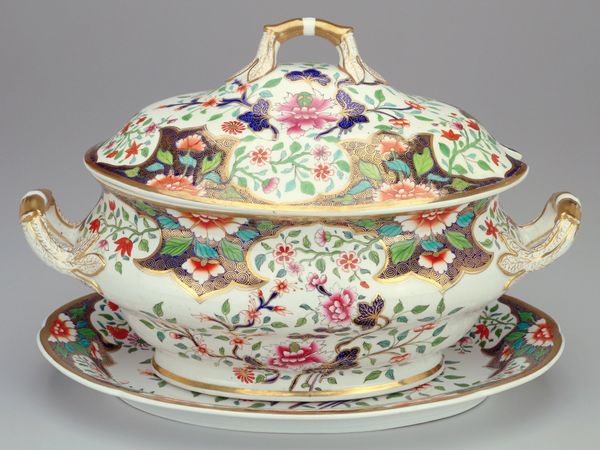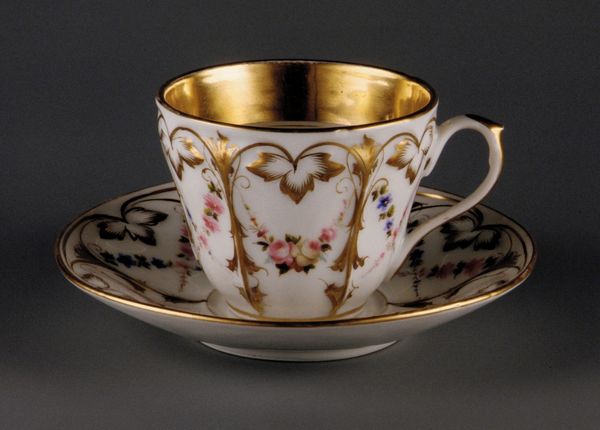
ceramic, porcelain, sculpture
#
ceramic
#
porcelain
#
sculpture
#
decorative-art
Dimensions: Height: 5 1/4 in. (13.3 cm)
Copyright: Public Domain
Curator: Editor: Here we have "Cup with Cover" crafted between 1820 and 1835, attributed to Jean-Baptiste-Edouard Honoré. It's ceramic, primarily porcelain, and categorized as decorative art. It feels so luxurious, but also functional. What catches your eye? Curator: Well, immediately I think of the labor involved in creating such an object. We're talking about 19th-century France; the production of porcelain like this wasn’t just about artistic expression, it was about industrial processes, trade, and consumption within a specific social structure. Editor: So, the cup isn’t just a pretty thing to drink from, but an indicator of social status and industry? Curator: Exactly. Consider the porcelain itself. Where did the raw materials come from? Who were the workers involved in mining, processing, shaping, firing, and decorating? It wasn't a single artist, but a whole network of skilled and unskilled labor that brought this cup into being. And how was it used? Was it purely decorative, or was it actually part of daily aristocratic life, signifying taste and affluence? Editor: That's really fascinating. The floral design now seems less innocent, more a symbol of… consumption. And you make me wonder about what impact did creating this cup have on those that toiled to do so. I never considered porcelain as industrial before! Curator: Thinking about objects as endpoints of material and social processes makes us reconsider the traditional divide between art and craft, between "high" art and the "decorative." It allows us to think more broadly about aesthetic and social value. So, this cup reflects an elaborate material transformation, as well as elaborate societal status. Editor: That's given me a whole new appreciation for porcelain, and decorative arts in general! It highlights the importance of understanding how economic factors can influence art forms. Curator: Absolutely. Approaching art this way helps us unearth the historical connections that often lie beneath the surface of beautiful objects.
Comments
No comments
Be the first to comment and join the conversation on the ultimate creative platform.
